Sauerkraut, or fermented cabbage, is a traditional way to preserve cabbage. I make plain sauerkraut often, but really like this variation which comes from Nourishing Traditions by Sally Fallon. If you want an excellent cookbook full of recipes and wisdom for whole, nourishing foods, I highly recommend it!
Making any sauerkraut with homegrown cabbage is a total dream compared to store bought cabbage, as the latter is much drier and requires a lot more work to pound out sufficient fluids to cover the vegetables. Homegrown ones are so loaded with fluids that it's super easy.
Making any sauerkraut with homegrown cabbage is a total dream compared to store bought cabbage, as the latter is much drier and requires a lot more work to pound out sufficient fluids to cover the vegetables. Homegrown ones are so loaded with fluids that it's super easy.
| Ingredients: 1 large cabbage, cored and shredded (set aside a couple of whole outer leaves first) 1 cup carrots, grated 2 medium onions, quartered lengthwise and very finely sliced 1 TBSP dried oregano 1/4-1/2 tsp red pepper flakes 2 TBSP non-iodised salt (or 1 TBSP salt and 4 TBSP whey) Note: the book also has an alternative version using a homemade pineapple vinegar instead of salt/whey. Can't wait to try that one day as it sounds yum! Method: Place all ingredients except salt/whey into a large glass or ceramic bowl. Lightly mix by hand. Sprinkle over salt/whey, and toss through to mix. Cover the bowl and let sit for 10-15 mins. Now, squeeze the cabbage mix with your hands, crushing it, causing liquids to drip out. If it's homegrown cabbage, you only need to do this for a couple of minutes. With store-bought you will need to pound the cabbage with a wooden pounder or meat hammer for 10-15 mins. Take 2 clean quart jars. Add small quantities of the vegetable mix to a jar at a time (being careful not to lose any of the fluids from the bowl/dripping veges), using a kraut pounder or the end of a wooden spoon to firmly pound down the veges. Keep adding more, and pounding down until jar is full. Repeat with second jar. Pour over the remaining fluids from the bowl. All vegetables should be covered with liquid, and the top if the mixtures should be at least an inch below the rim of the jars. Fold up the set aside whole leaves and place in the top of each jar, to hold the veges submerged (you will throw away these leaves after the fermenting is done). I also added a silicon muffin cup for extra packing. Cover jars tightly and set on bench in a suitable drip tray (as they will probably overflow). Leave to ferment at room temperature for 3 days before moving to the fridge. Enjoy! |
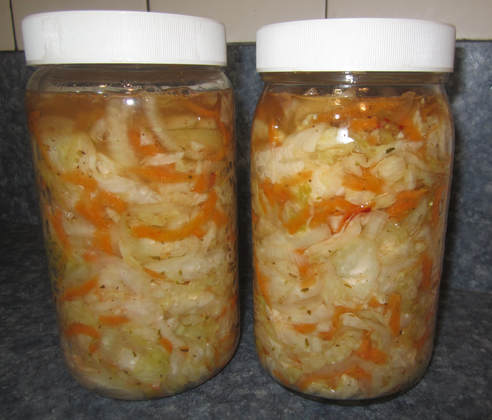
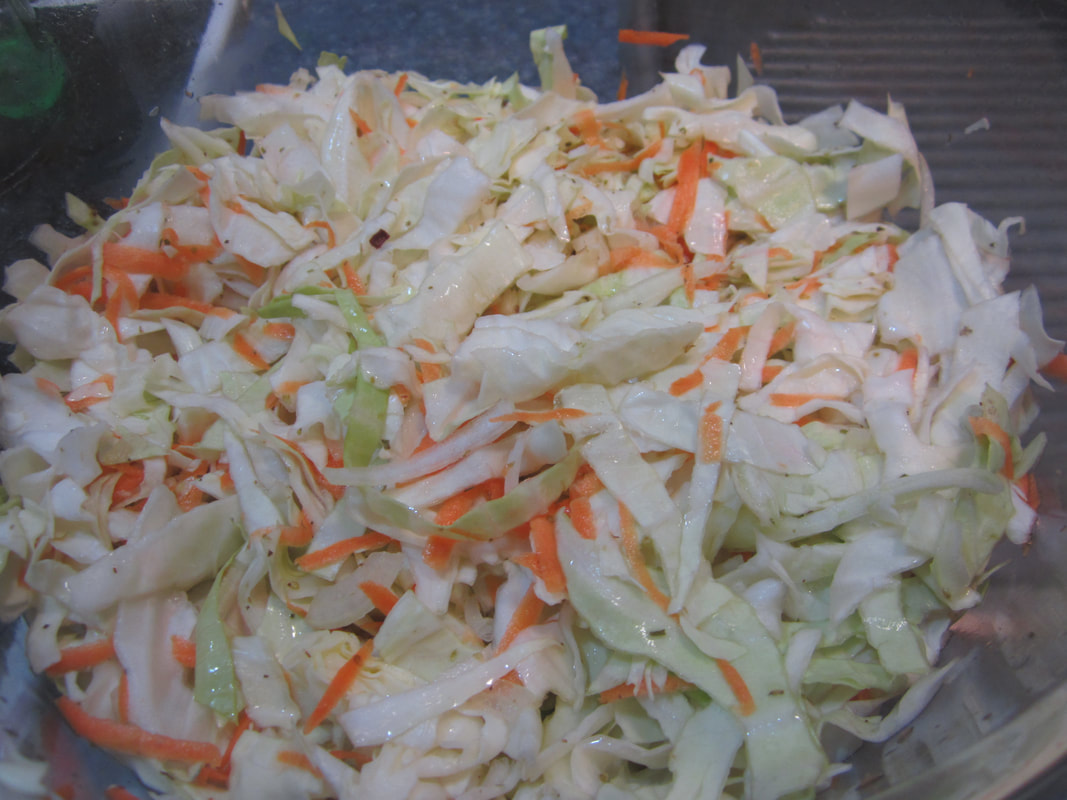
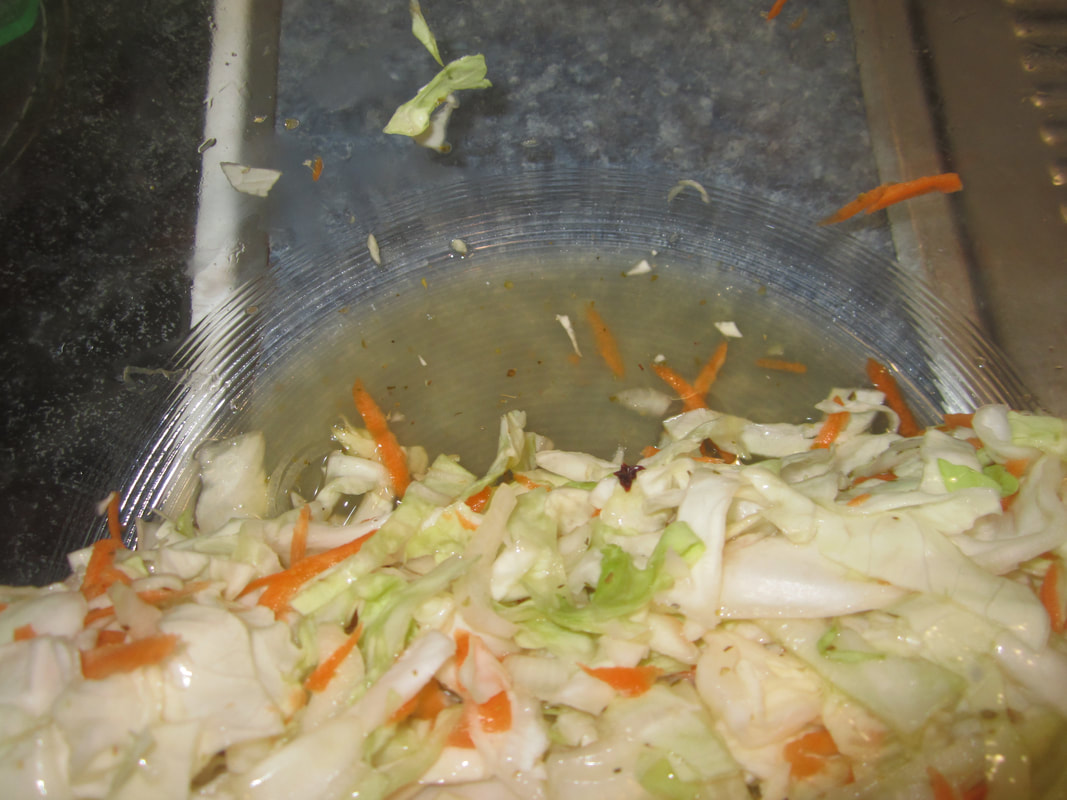
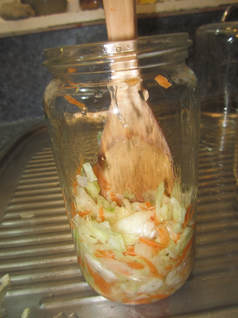
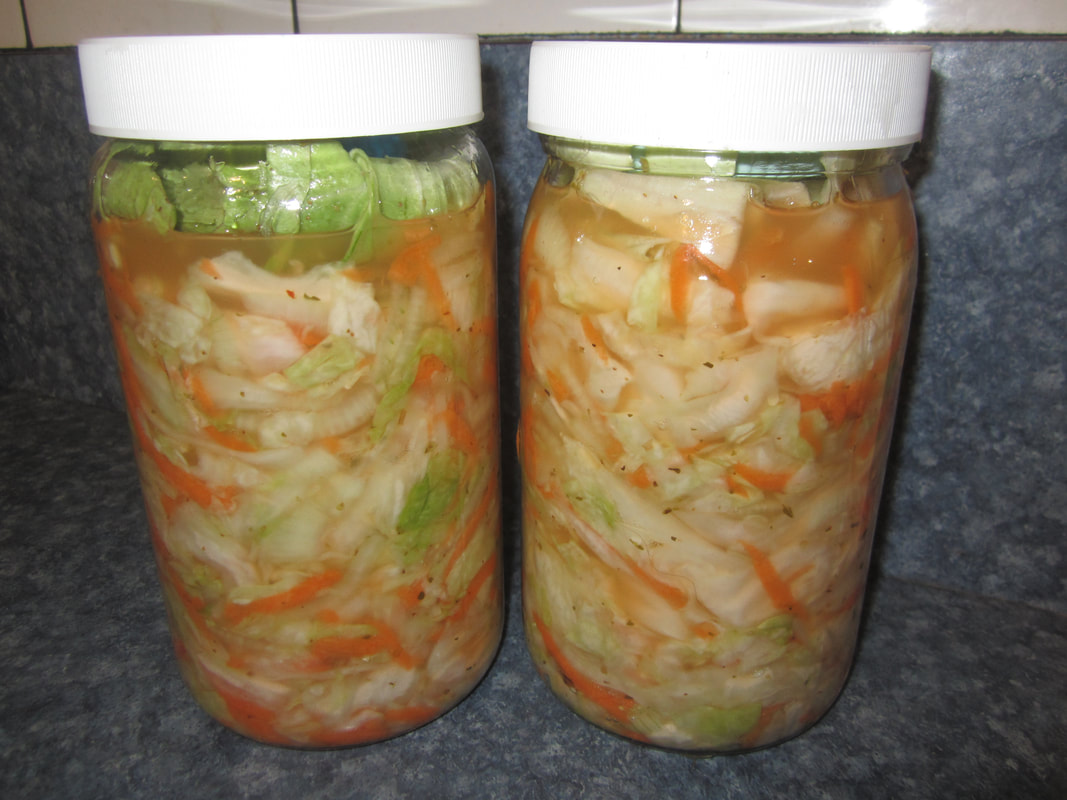
 RSS Feed
RSS Feed
